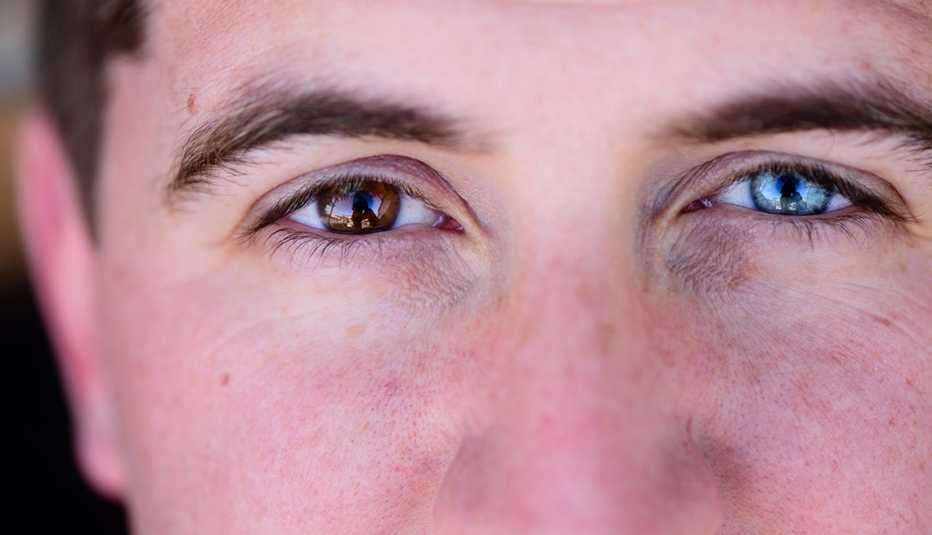AARP Hearing Center


One of the first things someone may notice about you is your eye color. But what if each eye is a different color? While this is a relatively rare condition — occuring in less than one percent of the population — it does happen, and it has a name: heterochromia. “It’s the word we use to describe when a person’s iris color doesn’t match,” explains Timothy McCulley, M.D., professor and chair of the Ruiz department of ophthalmology and visual science at McGovern Medical School at UTHealth Houston. While not common in humans, it occurs in dogs (particularly Dalmatians and Australian sheepdogs), cats and horses with surprising regularity.
Heterochromia takes three main forms, according to the American Academy of Ophthalmology:
- Complete heterochromia: One iris — the colored tissue at the front of the eye — is a different color from the other.
- Partial heterochromia: Part of one iris is a different color from the rest of it.
- Central heterochromia. This is when the inner ring of the iris is a different color from the outer ring.


Certain famous celebrities, such as Mila Kunis, Kate Bosworth and Kiefer Sutherland, reportedly have heterochromia. Although some speculated that musician David Bowie had different colored eyes, in fact it appears that he had another condition, called anisocoria, due to an injury that made his pupils different sizes, McCulley says.

































































More on health
6 Eye Symptoms You Should Never Ignore
In many cases, catching a problem early could help save your vision8 Health Problems That Can Be Detected Through an Eye Exam
Regular screenings can reveal signs of heart disease, diabetes and more